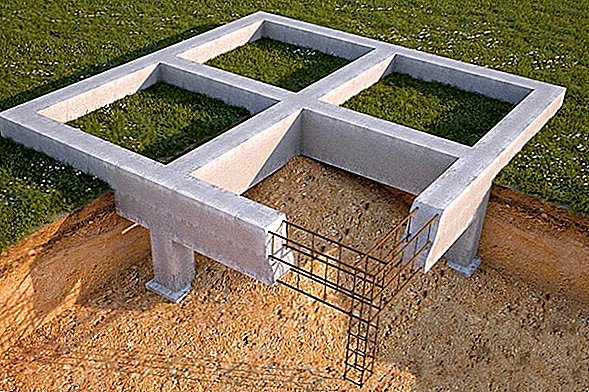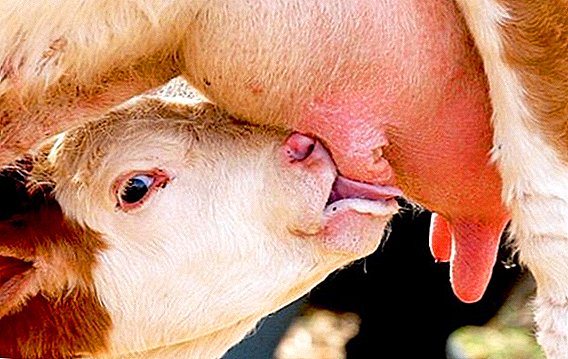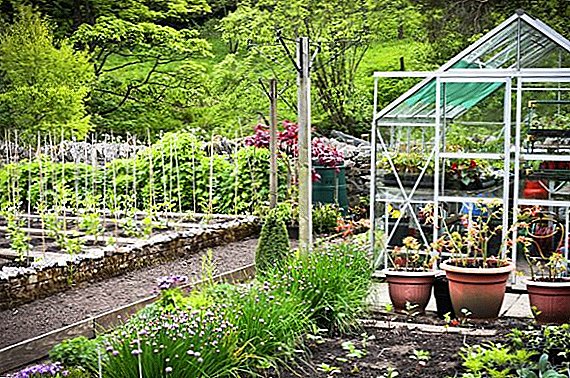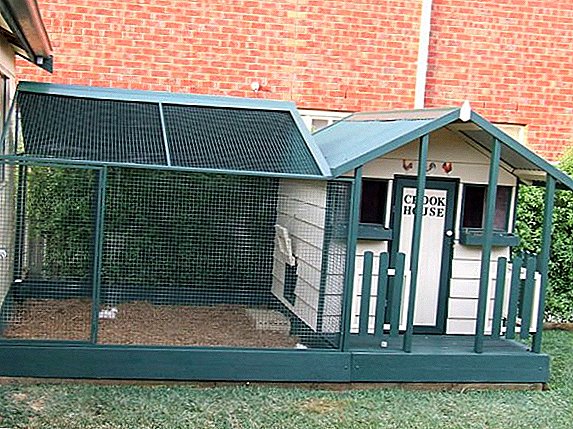 The issue of placing the chicken coop on the site is the same question that starts the construction of the bird house. The comfort of its feathered tenants and the complexity of the efforts to care for the house depends on the place where the chicken coop will be built. In addition, there are a number of rules and regulations, according to which household equipment should be located on the site.
The issue of placing the chicken coop on the site is the same question that starts the construction of the bird house. The comfort of its feathered tenants and the complexity of the efforts to care for the house depends on the place where the chicken coop will be built. In addition, there are a number of rules and regulations, according to which household equipment should be located on the site.
Where to place the chicken coop on the site
When choosing a place to build a house, consider the following:
- The place where the chicken coop will be erected must be dry. There should not accumulate rain and melt water, moisture should not stagnate. Land after rains should dry out well. And, therefore, the chicken coop can not be put in the lowlands, in the grooves and the bottom of the slopes.
- If the soil on the site by its nature is prone to accumulation of moisture and dries badly (swampy or clay), then everything must be done to dry it well. To do this, you can conduct the removal of moisture through trenches and ditches. And in this way the water can be redirected to those areas where it is needed, or take a little further away from the chicken coop, where you will then arrange a place for bathing birds.
- Welcome to the location of the chicken coop on a hill or slope. If the slope falls on the south-eastern side of the world, this will provide the hens with good illumination.
- The presence of drafts and strong winds in the location of the chicken coop is unacceptable. It should be built where there is already protection against such adverse conditions, in a quiet place, or independently build protection against drafts (for example, with the help of other building structures, high fence or hedge).
- Any chicken coop must have an open-air cage or a walking yard adjacent to it. Therefore, when building and calculating the size of the building, take into account the area where the birds will spend time outside.
- The yard should be well protected from drafts, accumulation of excess moisture and direct sunlight in the summer. Take care of shading the enclosure. But do not create a solid shadow, otherwise the chickens will not be enough light. It is best to create the conditions of the penumbra.
- Calculating the size of the site under the chicken coop, proceed from the number of livestock. Keep in mind that one or two hens should have at least 1 square meter. m, in extreme cases, at the same space there may be 2-3 clubs. But crowding is undesirable for chickens and has a bad effect on egg production.
- Pay attention to the proximity of the roadway to your site. The constant loud noise adversely affects the condition of chickens, which is why they can stop rushing. Keep the house away from noise sources.

Standards and requirements for the placement of outbuildings
According to the document "Planning and development of territories of gardening (summer) associations of citizens, buildings and structures," the location on the site of buildings of any kind is governed by certain rules and requirements.
Poultry farmers should learn how to choose the right chicken coop, how to make a chicken coop with their own hands, how to build a chicken coop for the winter and how to equip the chicken coop.
And although these requirements are often violated, a neighbor, who is hampered by the proximity of your chickens, may file a complaint with the relevant authorities, who will take a fine from you for violating the rules on the placement of outbuildings.
Chickens - noisy birds, roosters - scream every morning at the earliest hours, and the smell from the chicken coop even with regular cleaning can be heard even from a distance. Therefore, be prepared for the fact that the neighbors may not be completely satisfied with such a neighborhood with birds. And if during the construction of the house you violated the rules of its location, then they will have every right and opportunity to complain about you.  To date, sanitary standards put forward the following requirements for the placement of the chicken coop:
To date, sanitary standards put forward the following requirements for the placement of the chicken coop:
- there must be at least 4 m between the farm building for keeping birds and small livestock and the border of the adjacent plot;
- the distance from any treatment facilities, filter trenches and the roof of an economic building intended for the maintenance of birds and small livestock, to the border of the adjacent section must be at least 4 m;
- between the household building, which contains small livestock and poultry, and a residential, garden house should be at least 12 m;
- between the farm building, which contains more than 50 birds and the size of which is more than 50 square meters. m, and residential, garden house the distance should be at least 15 m;
- from the building, which contains birds and small livestock, to any other non-residential buildings on the site should be at least 7 m
 As we see, the house should be in the middle of the site. It should not be tightly adjacent to the neighbor's site, and all wastewater, ditches and roofs should be located on your own territory.
As we see, the house should be in the middle of the site. It should not be tightly adjacent to the neighbor's site, and all wastewater, ditches and roofs should be located on your own territory.It will be useful for you to read about what kind of lighting should be in the chicken coop in winter.
Considering the direction of the world
The laying of chickens depends on the location of the chicken coop relative to the cardinal directions. If you are planning a rectangular building, then depending on the direction of the world it should be located:
- in length - from east to west;
- windows - south facing;
- the door is to the east.
 The windows that go to the south will provide chickens with a long light day in the winter time, which contributes to egg production in the cold season, because it is known that chickens rush only during long light days. It will also help to save on lighting in the winter, since the lamps will have to be turned on only in the evening hours of the day.
The windows that go to the south will provide chickens with a long light day in the winter time, which contributes to egg production in the cold season, because it is known that chickens rush only during long light days. It will also help to save on lighting in the winter, since the lamps will have to be turned on only in the evening hours of the day.Agree that the maintenance of poultry is also important and aesthetic component. We offer to get acquainted with the design of beautiful hen houses.
In summer, the birds will be hot with large sunshine access, so windows should be equipped with light shutters so that on particularly hot days you can create a comfortable cool temperature in the house.
The door to do on the south side is not recommended, since with this arrangement it will be difficult to heat the bird house in the winter. Winds will blow through the door and cool the room considerably. Therefore, it is best to place the doors on the east side. The location in the west is also acceptable. 
What to place
The foundation is a prerequisite for the house. It performs important functions:
- protects chickens from small predators (rats, ferrets and others) that easily pierce the floor without a foundation and attack birds;
- helps to maintain a stable comfortable temperature in the hen house in winter, because the floor does not freeze through;
- ensures the reliability of the structure, protecting it from subsidence and heat buildup, because of which the bird house can stand for many years.
It is known that in the open air the health of the hens becomes better and the egg production increases. Read all about how to do the paddock for chickens.
When choosing the type of foundation for the house, you can use one of three types:
- Tape - has the highest indicator of reliability, but differs in considerable high cost. This foundation is more rational to use for the construction of houses than the house.

- Pile - easy to install, with good reliability, modern devices and technologies are used, but the price is also high.

- Support-columnar - this type of foundation is used to build a chicken coop. It is sufficiently reliable, easy to set and requires minimal financial and time costs.

The columnar foundation has a number of advantages, because of which it is most often used for the construction of the bird house:
- such a foundation raises the building above the ground, thus avoiding flooding the house;
- provides the hen house with good ventilation;
- floor boards last longer because they do not rot due to accumulated moisture;
- small rodents and predators are not able to reach the feathered prey;
- financially beneficial as it requires minimal cash outlay;
- easy to manufacture;
- It is laid quite quickly in time.
 Such a column foundation is made quite simply, the main thing is to observe the necessary height and width for foundation thumbs.
Such a column foundation is made quite simply, the main thing is to observe the necessary height and width for foundation thumbs.
- To begin with, we determine the location of the structure on the site and drive in iron rods around the perimeter. Between the rods we stretch the rope, which lies flush with the soil.
- Inside the markings we remove the top layer of soil to a depth of 15-20 cm (this land can not be thrown away, but used for household needs, for example, in a garden).
- Determine where the thumbs will be, based on the fact that the width of each of them will be about 50 cm, and between the pedestals there should be a distance of 1 m.
- In the marked places under the bollards, we dig holes, 60-70 cm deep and 50 cm wide (this width is due to the size of the two joined bricks).
- With another rope, stretched between the rods, we mark the level of 25 cm above the ground - this is a benchmark for the thumbs, the accuracy of which is determined by the hydraulic level.
- At the bottom of each pit we pour a layer of coarse gravel and sand 10 cm thick.
- We place two bricks on the bottom, which we fill with cement mortar on top. So we proceed further - every two bricks are poured with cement. The height of the pedestals should reach the marked level.
- When in 5-7 days the cement hardens, we fall asleep the empty space between the bricks and the surrounding ground of the pit with gravel. We also cover with gravel the whole area under the future construction.
Video: the foundation of pipes under the chicken coop
After that, you can proceed to the direct construction of the chicken coop.
Consider all the features of the content of chickens in the winter season and how to heat the chicken coop in winter.
Placing a chicken coop in the garden plot is a responsible matter and requires taking into account many factors: soil type, presence of slopes and hollows, submerging by groundwater, consideration of the cardinal points and even the actual distance between different buildings on your plot and the neighbor's plot. It is important not only to place the house according to all these requirements, but also to provide it with a reliable foundation that will protect chickens from cold, moisture and predators.















